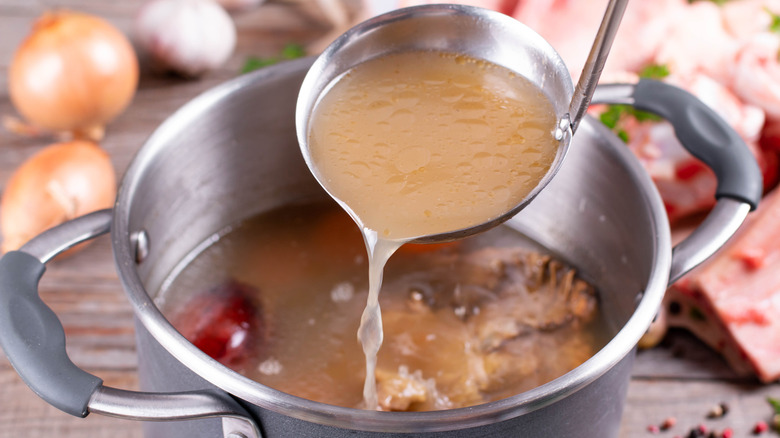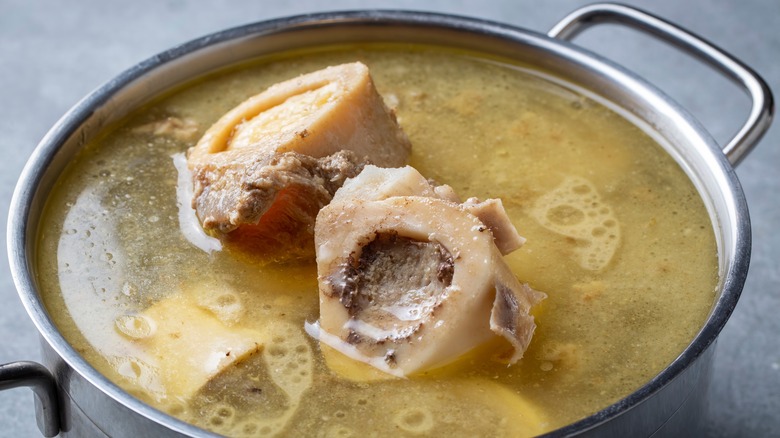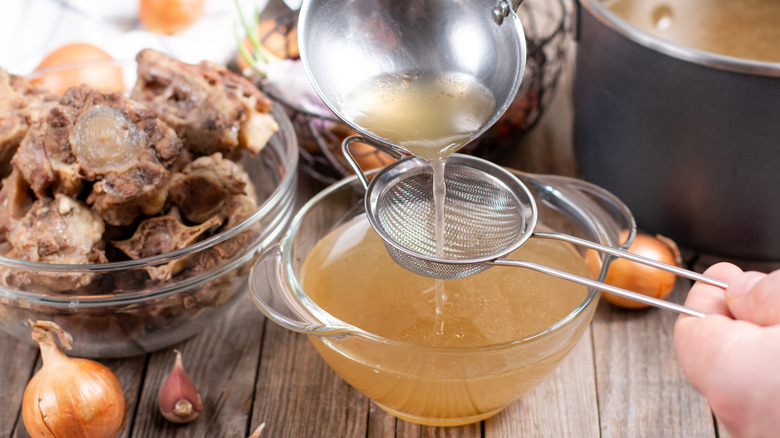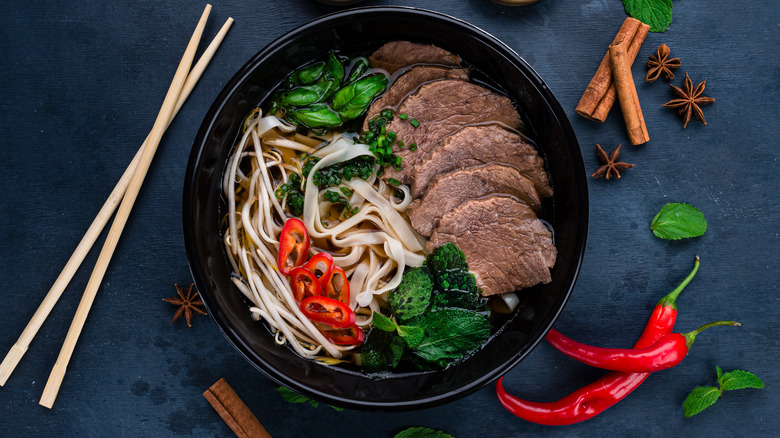The Differences Between Brown And White Stocks (And How To Use Both)
Homemade stock will reliably take your cooking from so-so to sublime. If a savory dish calls for water, use stock instead to impart a depth and complexity of flavor that will elevate anything you cook — even plain rice. You can use vegetable scraps you've saved and frozen (no onion skins, though!) and tailor your stock to suit your featured soup, stew, or sauce.
There are only two basic kinds of stocks: white and brown. Unsurprisingly, both were developed by the French as their cuisine evolved from "throw everything into the cauldron" to something more nuanced. (The French term for stock, fonds de cuisine, literally means "the foundation of the kitchen.") Besides fundamentals like vegetables and aromatics, brown and white stocks are made with chicken, beef, or veal bones because it's all about the collagen, the protein found in animal bones that make a good stock luscious. You only need two things to coax collagen into your cooking: heat and time; and that's where brown and white stocks take slightly different paths.
White stock requires blanching without roasting
The first step in making any stock is to remove impurities from the bones, like coagulated blood, dirt, or hair. This is a separate but necessary process that is different from extracting the collagen. White stocks are based on blanching, so you can go about this in one of two ways. The first is to briefly but vigorously boil the bones by themselves in water — just don't blanch them for too long or you may risk losing their gelatinous goodness.
Alternatively, you can throw the bones in a large pot with the other stock ingredients and skim off the resulting scum once they've come to a simmer. Expect to skirt around vegetables and herbs when skimming a stock in progress. You can also strain your finished stock through cheesecloth or a fine sieve to remove impurities. No matter which method you choose, always start with cold water to ensure you get a clear and clean stock. Your standard, indispensable chicken stock is a great example of the blanching method.
Roast your ingredients beforehand for a brown stock
Brown stocks require the extra step of roasting your ingredients. The easy method is to place the bones (and whatever vegetables you'd like) in a 425-degree Fahrenheit oven for about 30 minutes, making sure to not burn any scraps of meat still attached. Although it's optional, many people like to take the bones out of the oven near the end of the roast, brush them with a little tomato paste, and pop them back in for another 10 minutes or so.
The acid in the tomato paste helps break down connective tissue in the bones and also adds flavor and color. When your roasted bones are sufficiently purified and pleasingly browned, into the stock pot they go with the vegetables and aromatics. Making a brown stock at home is essential because store-bought beef broth doesn't use much actual beef. As a time saver, the carcass of a store-bought rotisserie chicken makes a divine brown stock.
Which stock should you choose?
Choose whichever stock will best complement your featured dish. Think of it the same way you might for wine pairings or roux: lighter colors for more subtle, delicate foods; darker colors for more robust dishes. Traditionally, white stocks are used for soups and velouté sauce. Brown stocks work best for more stronger applications like beef or veal stews and consommés.
Even though the foundations of stock-making are simple, their diversity can be breathtaking. In the mood for Mexican chicken and tortilla soup? Blanch a whole chicken in the pot with vegetables and custom aromatics like dried oregano, pasilla chilies, and whole cumin seeds. Hungry for a big soothing bowl of Vietnamese phô? Roast onions and fresh ginger alongside your beef bones and enrich your stock with cilantro, chopped daikon radishes, and spices like whole star anise, black cardamom pods, cinnamon sticks, and coriander seeds.
White and brown stocks enhance a world of culinary dishes and techniques. They are a great use of vegetable scraps, freeze well, and make any dish rich and luxurious. Which one will you make first?



